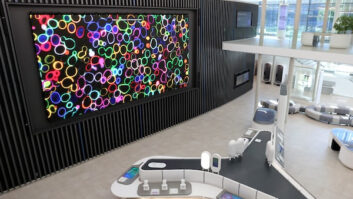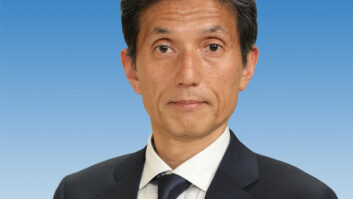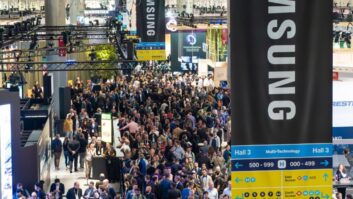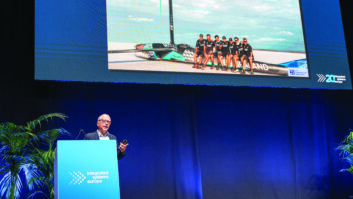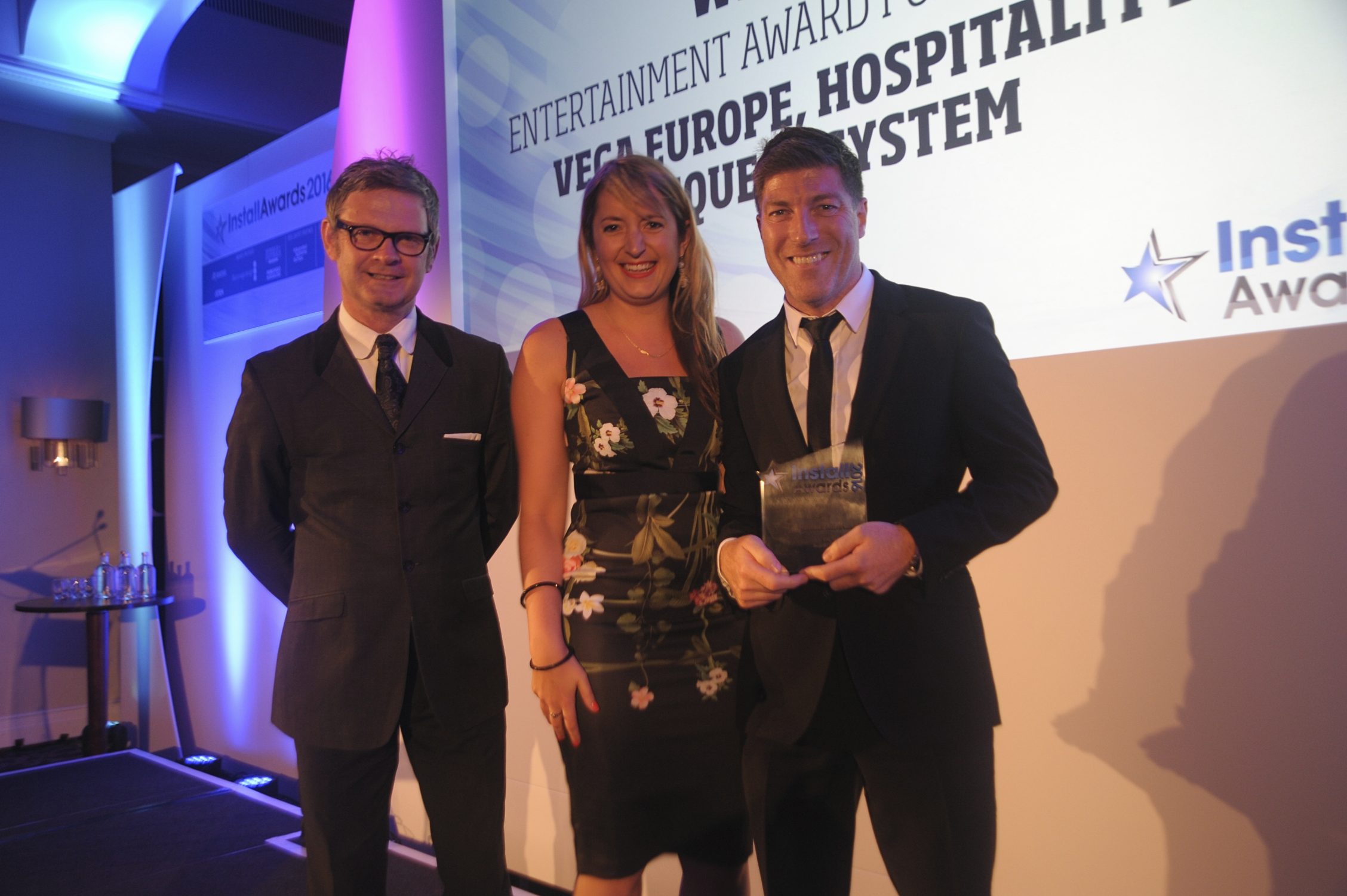
Paddy Baker talks to the sales and commercial director of an award-winning European integrator about unified communications trends, market moves and favourite projects.
Tell me about your background in the industry.
I’ve been in the industry for 20-plus years. I started off working in small IT firms, and eventually went on to work for a large IT infrastructure company for about five years in their audiovisual and videoconferencing department. Then, I moved on to help create a new audiovisual company, which we grew for about five years – and that was followed by being given the opportunity to move over to VEGA to start and build the EMEA side of their business. That was about six years ago.
How well established was VEGA at that point?
The business was first created over 30 years ago in 1986 in Hong Kong, founded by the guy who is still our chairman, Laurie Chow. The business grew into what is now the largest audiovisual and videoconferencing systems integrator in Asia Pacific. VEGA now employs about 750 staff globally with annual revenues of about £90 million. We’ve now got 25 offices across 14 countries. VEGA Europe on its own is already turning over approximately £7.5m, with around 45 staff.
The catalyst for the EMEA side of the business, predominantly the UK and Europe to date, was twofold. One was Laurie’s vision to grow the company outside of Asia Pacific. Secondly, we’d won the Royal Bank of Scotland contract to support the whole of their video infrastructure globally. This contract has gone from strength to strength and we are now coming up to our sixth year with RBS.
Tell me more about VEGA’s business.
Historically, our core business has been, and still is, what I would call mainstream AV and videoconferencing. On the video side of things, we have the highest level of accreditation from Cisco and Polycom so we’re able to advise, supply and support across their entire product ranges including infrastructure and immersive solutions.
In addition, we have a cloud-hosted video service company, UCi2i, that’s part of our group of companies. It enables us to provide our clients with seamless interoperability between the standards-based video world – mainly Cisco and Polycom – and Microsoft Skype for Business.
What changes have you seen that have impacted your business?
One is the convergence between AV and IT. Our business has had to evolve to really understand how those two areas integrate. Another way in which the market has evolved is that clients really expect voice and video to be on the same platform. Then, there’s the emergence of what I refer to as IT-based collaboration platforms such as Skype for Business, which is something of a game-changer. We’ve made it our business to ensure that we understand how all those areas integrate so that we can intelligently talk to clients about their complete UC strategy.
There’s one other area that’s a really hot topic at the moment, and that’s the workplace. The workplace is changing – it’s no longer about a fixed office or fixed meeting rooms: it’s about open-plan areas and a more flexible, agile, dynamic way of working, sometimes from home or sometimes on the fly. We’ve had to adapt our business to make sure we’re able to advise how technology can help companies change how they work and how they attract the right staff – often graduates who are used to new and innovative technologies.
Do you find, when you’re talking to companies about collaboration systems, that they understand what’s available and know what they want?
I think clients these days are a lot more clued up on what they want, and what’s available. It’s still very important, though, for us as a systems integrator, to make sure we’re totally up to speed with new technologies and innovations and the latest roadmaps from the major manufacturers, so that we can advise and build the latest technologies, where appropriate, into our designs.
To make sure that what we are recommending fits with a company’s plans to change their working practices and culture, and also fits with their overall UC strategy, it’s important that we ask the right questions up front. The different parts of the organisation may not realise that their strategies are not aligned, and it’s our job to help bring that together.
So you’re helping them to widen their view?
Absolutely. What we sell them needs to align with their other strategies beyond the one we may be talking to them about. A classic example would be a company that might come to us and say, “We want some standards-based videoconferencing equipment” – and if we haven’t asked them the right questions about what they’re doing about their IT infrastructure, for example, then we might end up selling them something that doesn’t fit their wider strategy.
Aside from those technology trends, what other big changes have you seen during your time in the industry?
Clients are generally more savvy about what they want. They generally want much more simplified solutions: gone are the days when they wanted very complex boardrooms with racks and racks of equipment. They want simple solutions that are consistent across the organisation.
Are they more concerned with flexibility and futureproofing?
We’re simplifying solutions, and the price of products has come down, so solutions aren’t as expensive as they used to be. They’ll know that what they’ve invested in is going to last them five years and they’ll have got the return they were looking for.
The other key thing that’s fairly new is we’re finding increasingly that companies are getting more and more used to using video on a day-to-day basis, and they’re quickly running out of videoconferencing systems. That’s where we’re seeing the trend for huddle spaces. There are some really good products coming to market at present – the Crestron Mercury is a good example, which is a very cost-effective solution to video- and UC-enable a small space.
You mentioned AV-IT convergence. How far down that road have we gone – and how much further can the industry go?
I think we’re a long way along that line. In the majority of project meetings that we have, IT tend to be involved at a very early stage. From that point of view, AV/IT is well established and mature. That said, in very large organisations, you can still find that voice, video and IT are quite dispersed – working on their own strategies, and may not be completely aligned. That is where we can help advise.
Do you have a favourite project that VEGA has completed over the years?
The nature of our business means that we get to work with many different vertical sectors and different kinds of organisation. We did a very nice project recently for Goodwin Procter – now rebranded as Goodwin Law – in central London.
It was a complete move of their UK headquarters and involved more than 30 fairly high-end conference suites. They were so delighted with what we delivered that they then commissioned us to do effectively the same job for their German and French headquarters in Frankfurt and Paris. We’re now supporting their facilities for the coming five years.
Coutts was also a really good project as well. They were going through a complete rebranding exercise. It was challenging, because it’s a listed building in The Strand in London. There were a lot of acoustic challenges there. It was a project we very successfully delivered that included all sorts of solutions such as a 5m x 3.5m LED wall in their main atrium and a complete PA system for large corporate events and entertainment for up to 500 people at a time. There were about 30 conference suites in there which all had videoconferencing, and then there was the in-house development we did with our Tio in-room catering ordering system, for which VEGA Europe won an InstallAward in 2016.
Is there anything that frustrates you about the AV industry?
Today, not really. Because we’ve been in the industry so long, we’ve gone through all our original growing pains. Now, the processes we have in our business are very streamlined and very efficient. That helps to iron out any difficulties.
As I said earlier, clients are a lot more clued-up about what they want these days, so that helps – we get a clearer brief. Whenever we go into a client, we ask the basic, high-level questions about what is their real estate like, how many offices do they have, what is their overall workplace strategy – such as what are the kind of people they’re trying to attract to the business, which is very important these days – what’s their infrastructure like on video, voice and IT.
Once we’ve got the answers to those questions, we can go back to our systems design team and work with our manufacturers – we’re agnostic – so can give truly independent advice about the right solution for them.
You believe that manufacturer-independence is one of VEGA’s key strengths. What are the others?
First, we have a global footprint. That’s increasingly important for large corporates and international clients – they don’t want to be dealing with multiple companies or systems integrators. They want one global business to devise the best solutions and to create standards and consistency across the organisation.
Second, our quality of service and focus. From a UK perspective, after six years, we’re well-established and we’ve got the independence and autonomy, together with being the right size, to focus on our clients – but we’ve got the backing and financial support of the global group, so we’ve got the best of both worlds.
